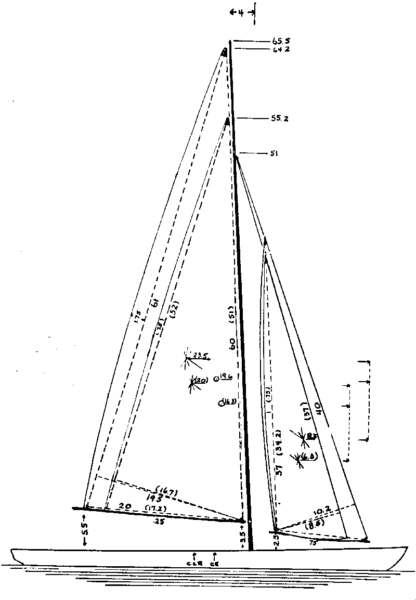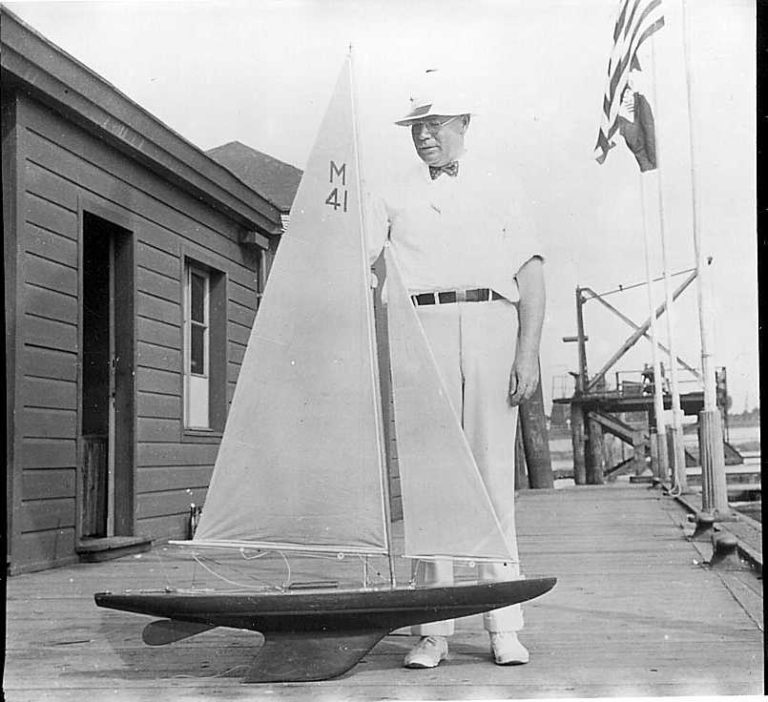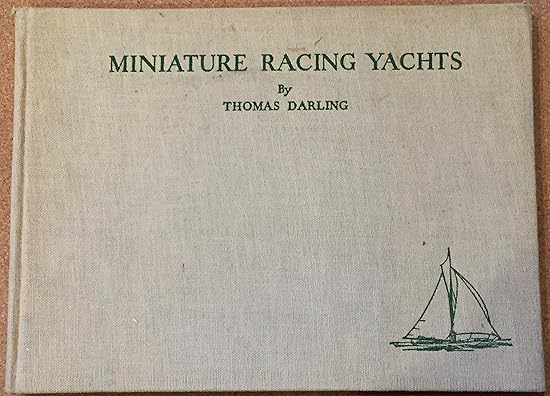by Walter K. Moss
Here in Wisconsin, where skippers frequently encounter high wind velocities during the course of our model yacht racing season, it is almost essential that our craft be equipped with first, second, and even third suits of sails, while the hulls themselves remain of such a design as to be driven easily on those days when the winds are light. This situation compels may of us to make more than a casual study of our sail requirements.
Naturally, every model yachter crowds the area restrictions on his No. 1 suit of sails in order to get the most out of his boat on the “light” days. When this suit (and the wind) causes too great a heel in the hull, with a consequent slowing-up of the speed, it is time to put on the second suit, continuing to the third, if the second proves too large. There doesn’t seem to be any hard and fast rule as to how much smaller the second and third suit should be, nor would this be practical, because of the variations in the different hull recovery powers. However, it is a fairly general practice to obtain the maximum area permissible in suit No. 1, 10 per cent less area in suit No. 2, and 20 per cent less than No. 1 in suit No. 3. If there are to be only two suits, the smaller might be 15 per cent less.
Many theories have been developed with regard to the ratios between jib and main areas, foot to hoist, and length of keel to foot. An effort has been made to consolidate the best of this information into the accompanying illustration and measurements. The relationship of all these factors has been given consideration as well as the balancing of the two suits of sails. On a conventional Marblehead design the sail plans suggested should prove most satisfactory, although it is generally advisable to follow the sail plans accompanying any hull blue print.
That every sail plan must be balanced on the craft with with it is used is a foregone conclusion, but once a balance has been achieved no further difficulty should be experienced when complete changes from first to second suits are made, as the general balance will remain approximately equalized.

The 1/8″ concave/convex curve of the mainsail luff provides for a flat upper surface and a more flowing curve in the lower section. This seems advisable in such a moderately high sail plan. The .14″ concave jib luff will furnish a fairly flat surface, but to such a point where all jib pulling power has been lost. The forward, and lower, position of the center of effort in the No. 2 suit will do much to correct for the differences between higher winds and faster motion as against lighter winds and slower motion. The high-cut clew of the mainsail should prevent the boom dragging, which would make your steering gear inoperative, and the loose foot can be made adequately flat by tightening up on the outhaul in heavier winds. The ratios of the component parts will be found in the figures accompanying the illustration. These are some of the factors weighed in submitting these balanced and dimensioned sail plans.
Like the experienced golfer who finds that a balanced set of golf clubs improves his game, so you will find that a balanced set of sails will improve your yacht’s performance.
Sail Areas
Suit No. 1
Mainsail: (61 x 19.5)/2 = 594.7
Jib: (40 x 10.2)/2 = 204.0
Total: 798.7
Suit No. 2
Mainsail: (52 x 16.7)/2 = 434.2
Jib: (37 x 8.5)/2 = 157.2
Total: 591.4
Center of Effort
Suite No. 1
Mainsail Contribution: 594.7 x 23.5 [from diagram] = 13975
Jib Contribution: 204.0 x 8.3 [from diagram] = 1693
Combined: 15668/798.7 [total area] = 19.6 [from the reference point]
Suite No.2
Mainsail Contribution: 434.2 x 20.0 [from diagram] = 8684.0
Jib Contribution: 157.2 x 6.3 [from diagram] = 990.3
Combined: 9674.3/591.4 [total area] = 16.3 [from the reference point]
Percentages
Suit No. 1
Jib to Mainsail: 1 to 2.91
Foot to Hoist: 1 to 3
Area to Maximum Allowed by Rules: 99.9
Suit No. 2
Jib to Mainsail: 1 to 2.84
Foot to Hoist: 1 to 3
Area to Maximum Allowed by Rules: 86.5
Curves
Suit No. 1
Mainsail luff: 0.12 Concave and Convex
Jib luff: 0.14 Concave
Mainsail foot: 0.25 roach
Jib foot: 0.75 roach
Mainsail leach: 1.75 roach
Jib leach: 1.00 roach
Suit No. 2
Mainsail luff: 0.12 Concave
Jib luff: 0.16 Concave
Mainsail foot: 0.25 roach
Jib foot: 0.75 roach
Mainsail leach: 0.75 roach
Jib leach: 0.75 roach
Addenda
Mast stepped 6″ ahead of center of lateral resistance on conventional design. Sail plans balanced to a 4″ mast rake. Center of effort of No. 2 suit 1″ ahead of that of No. 1 suit to balance heavier winds. Booms will clear water under average heeling of yacht in blows. Jib fore-stay is under 80 per cent height ruling. Spar lengths: mast 65.5, boom 21.5, jib-club, 12.2



